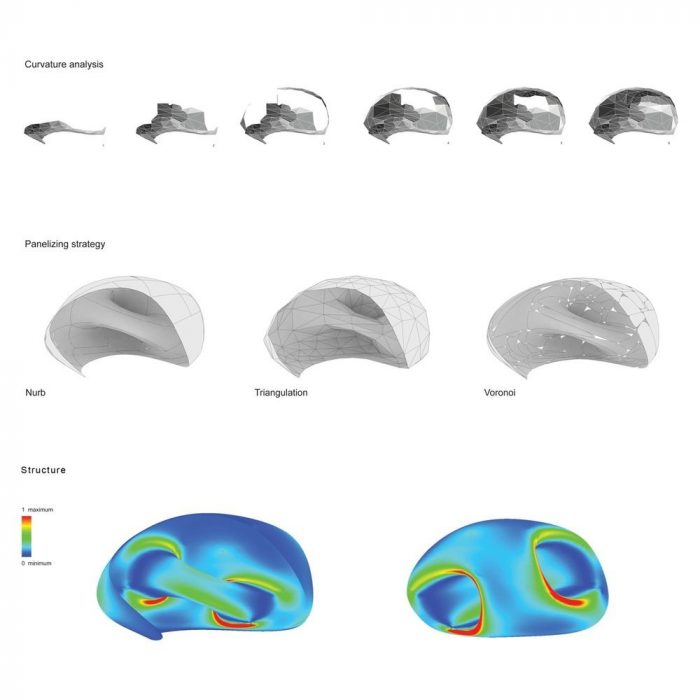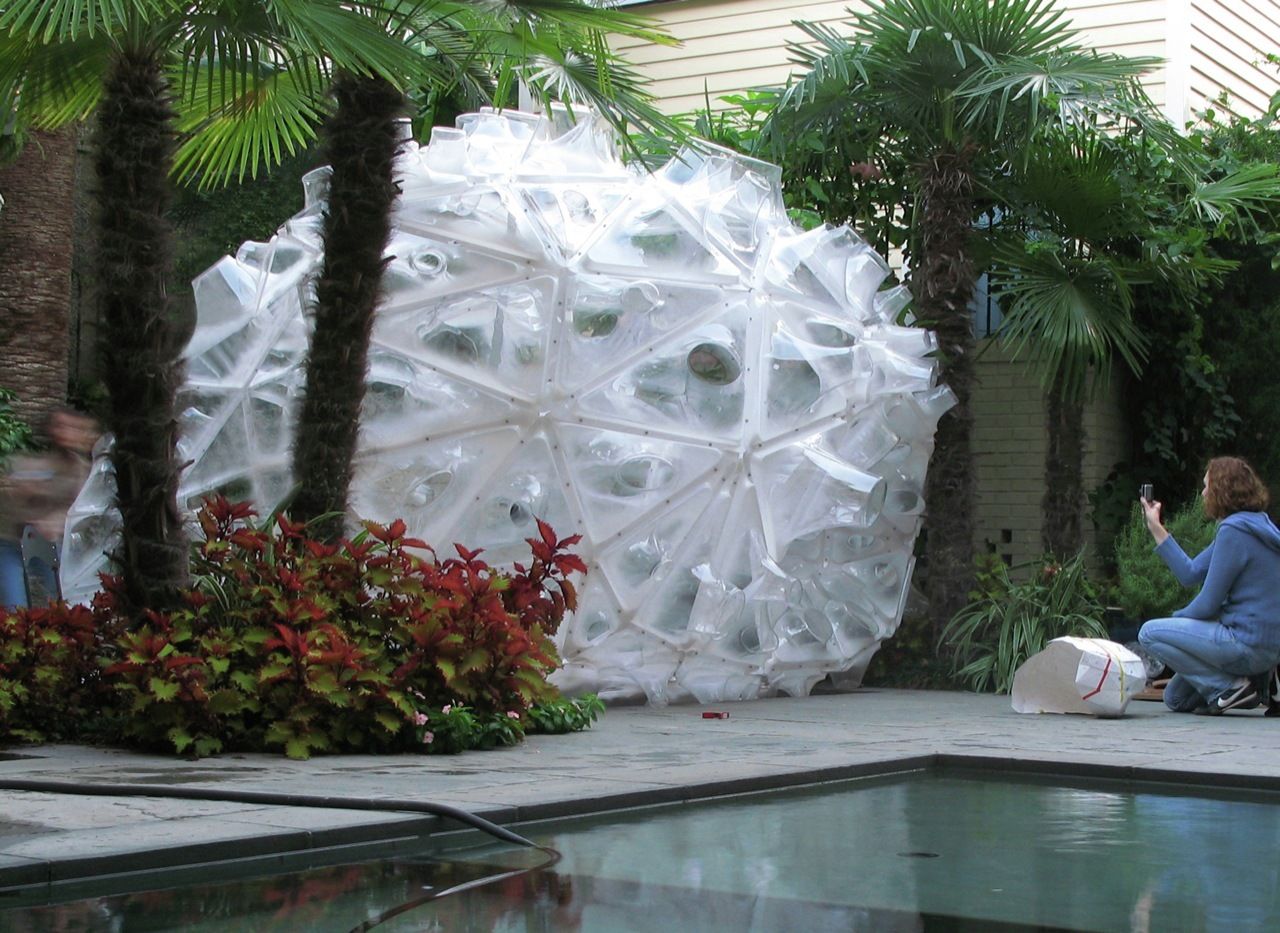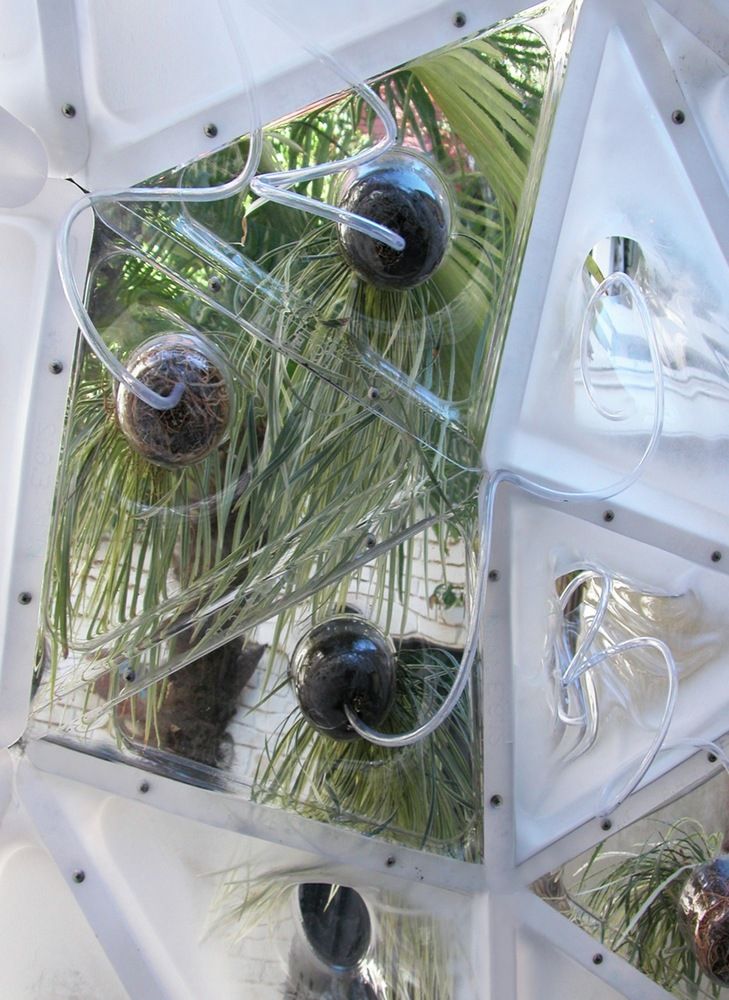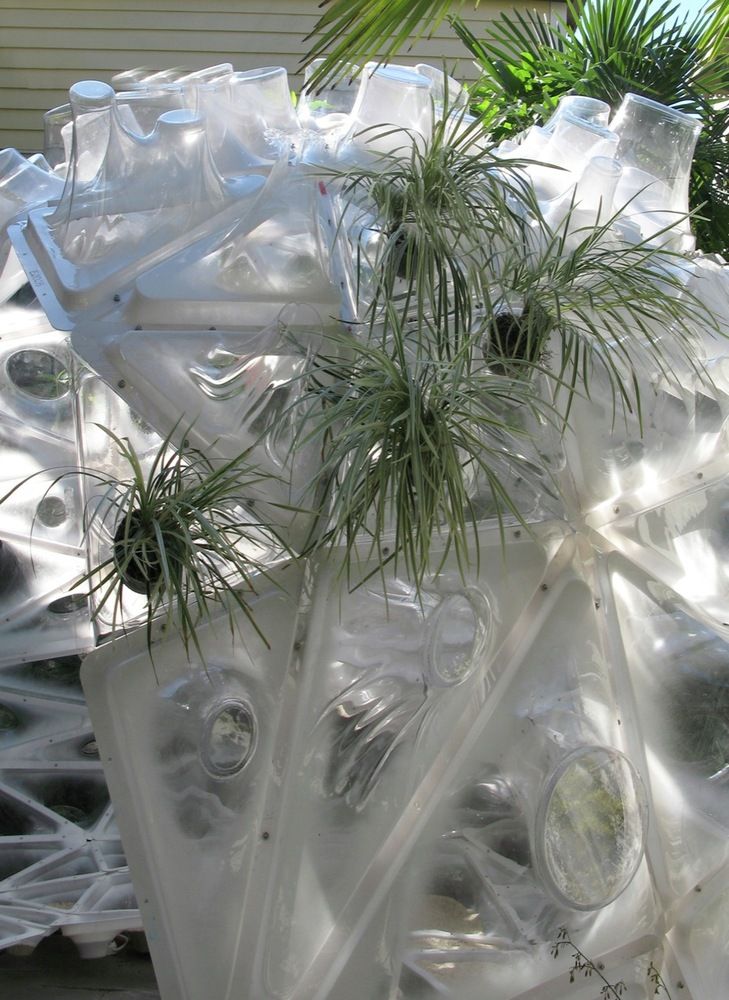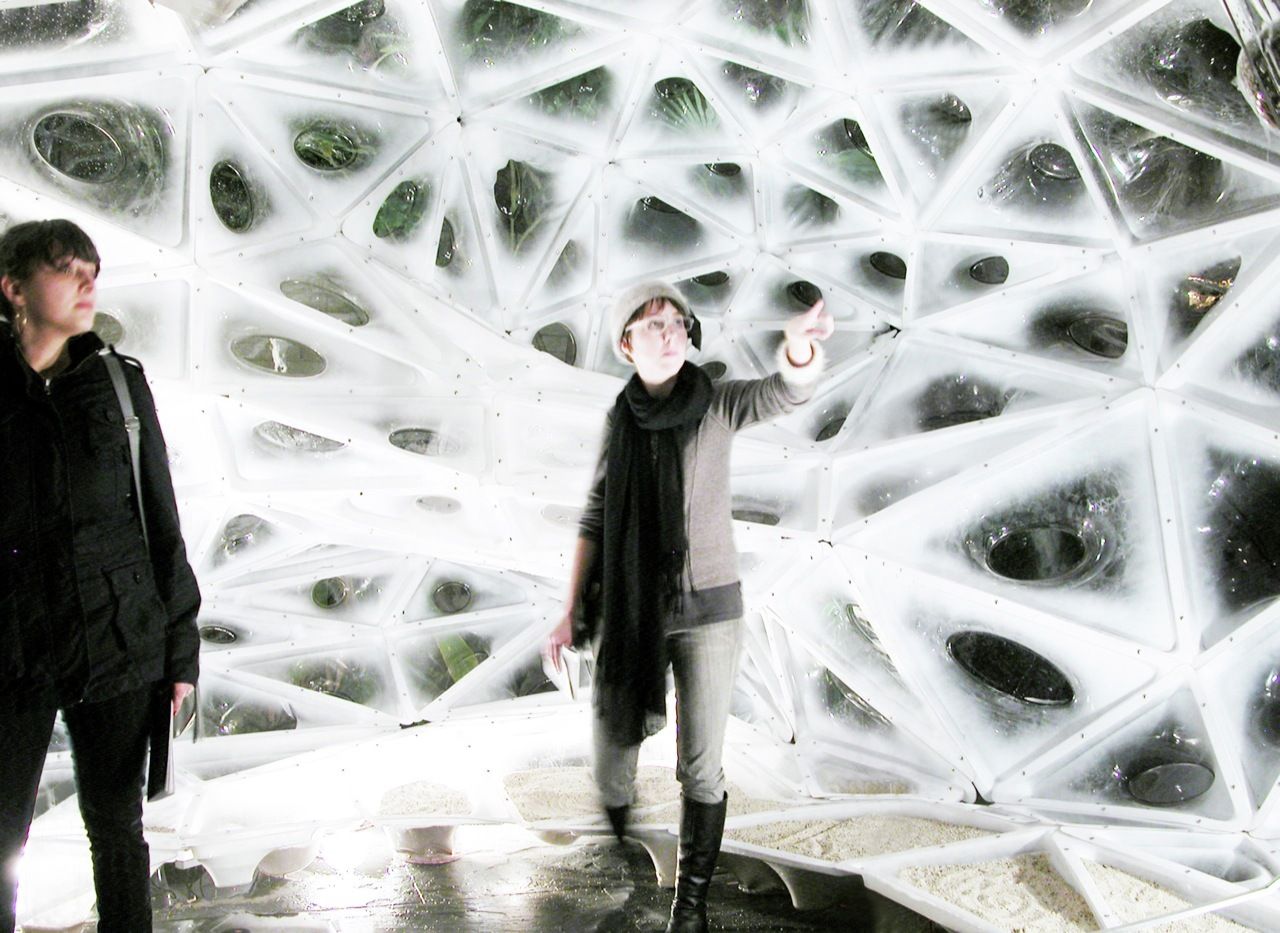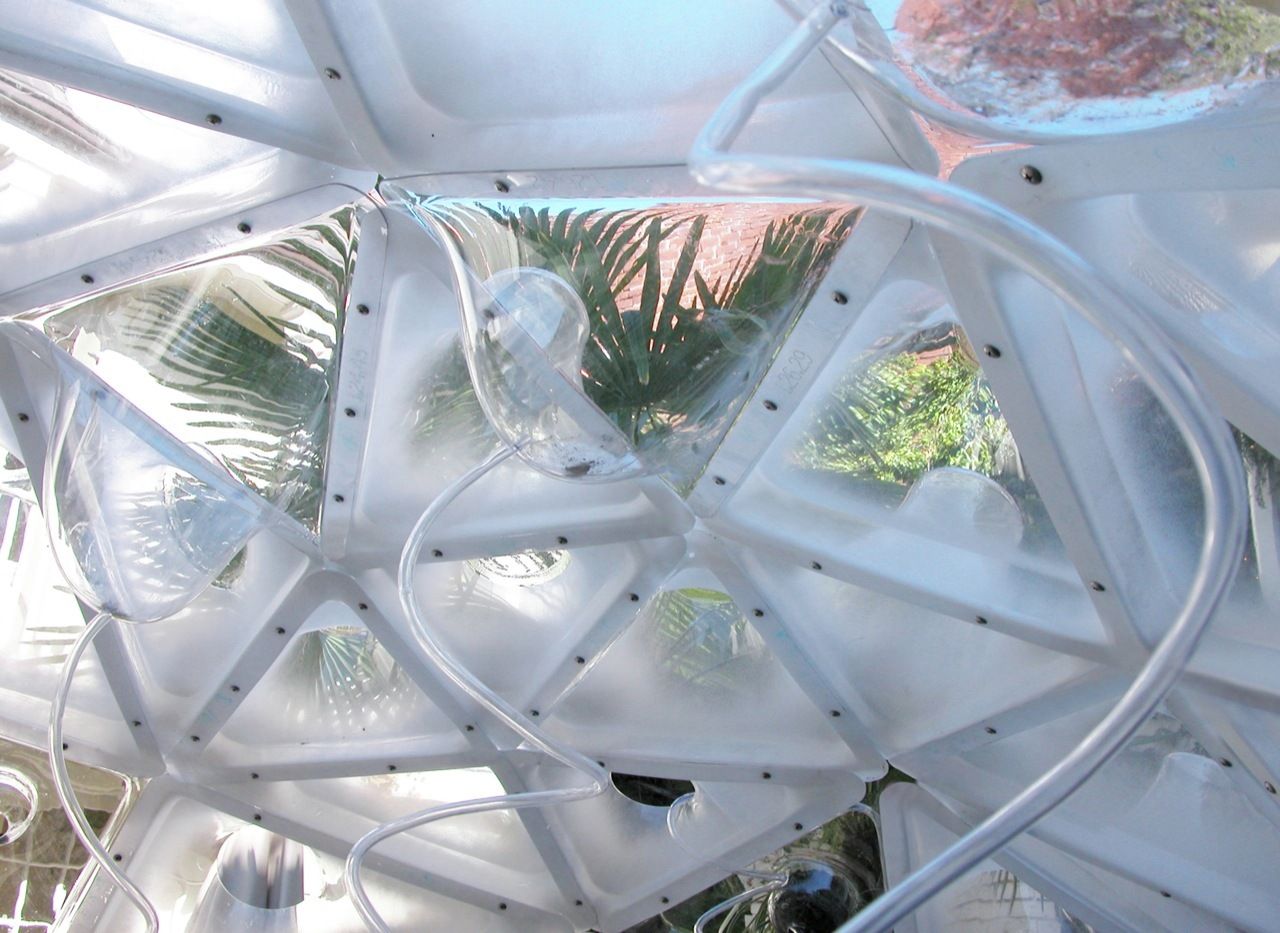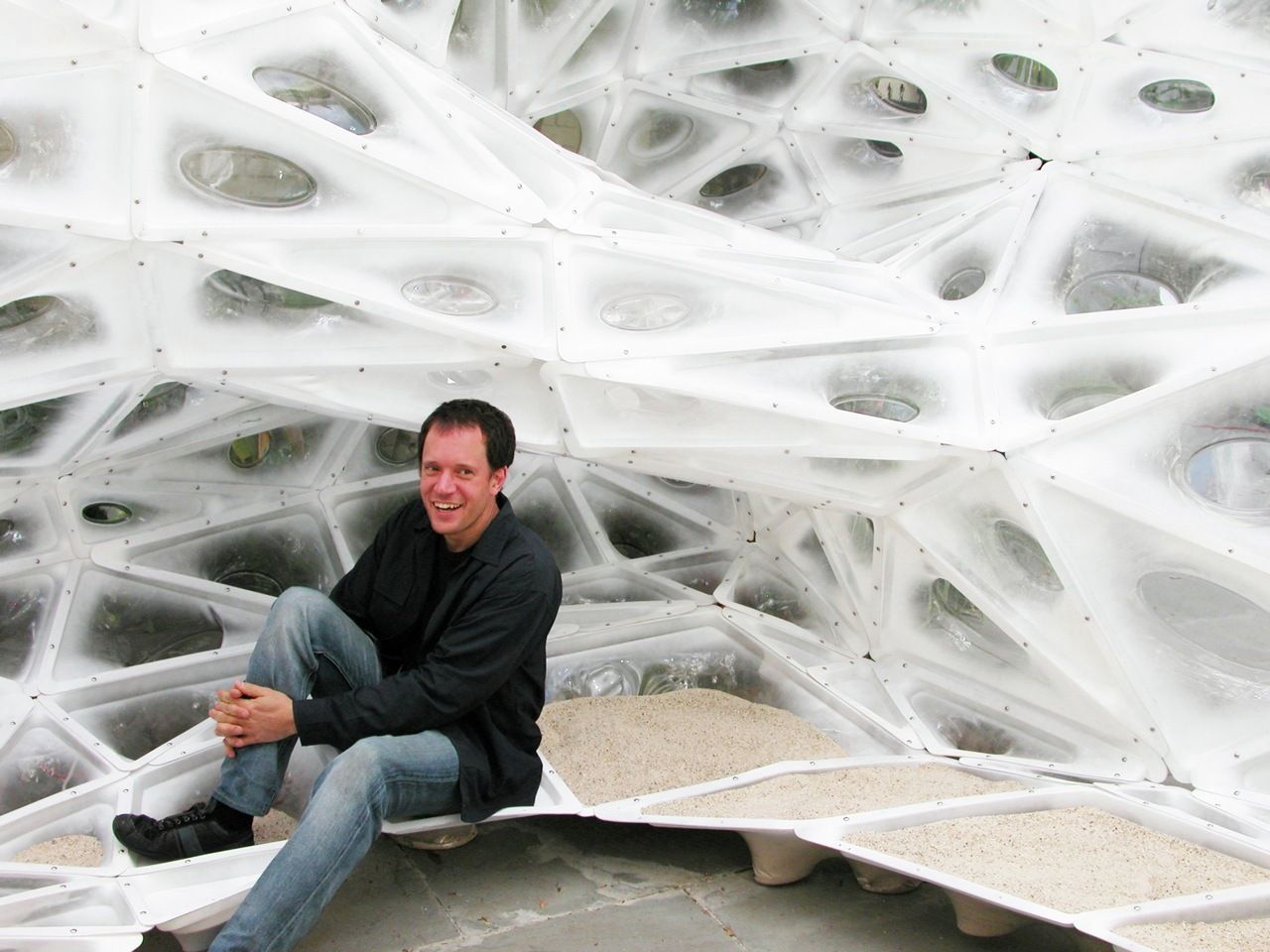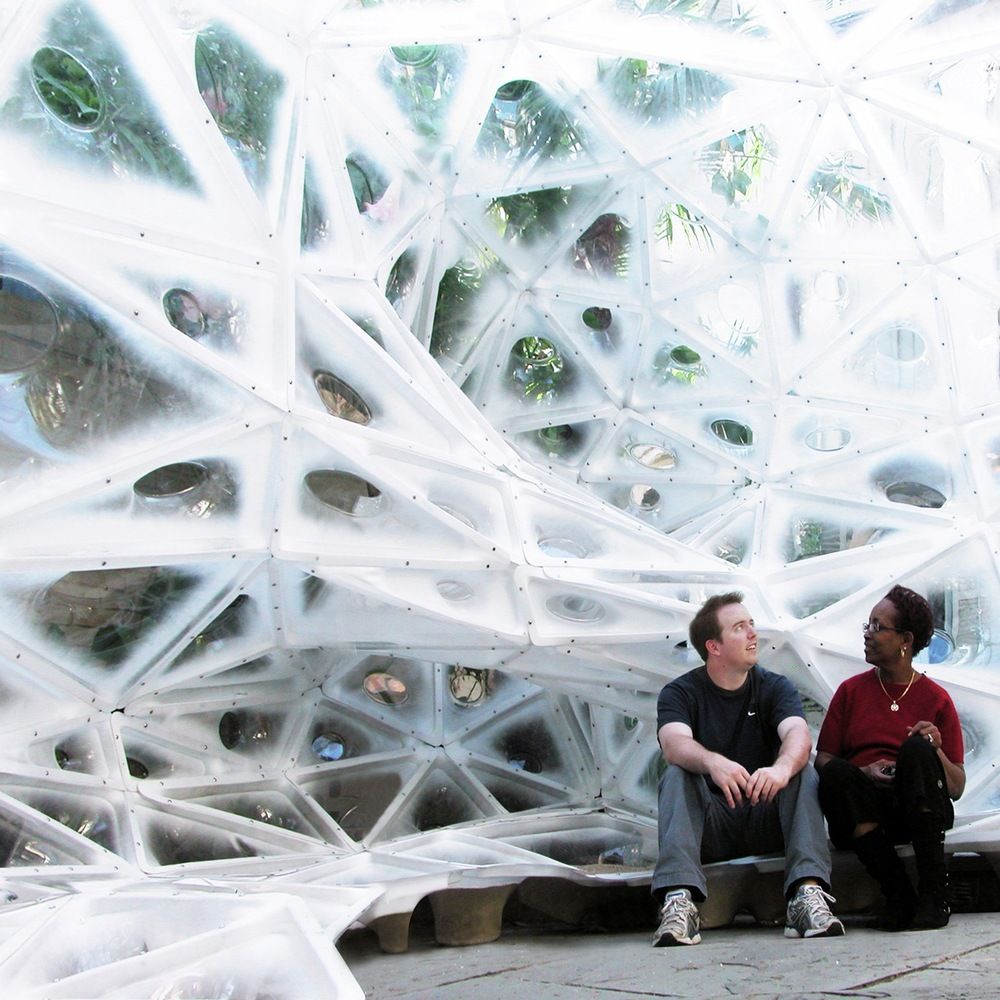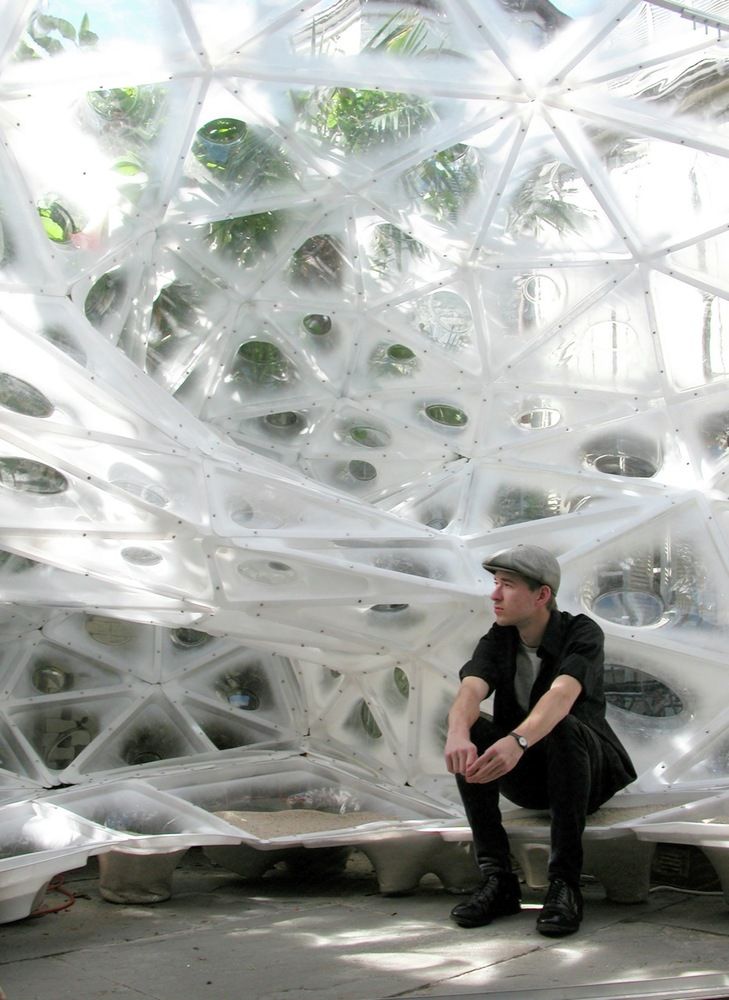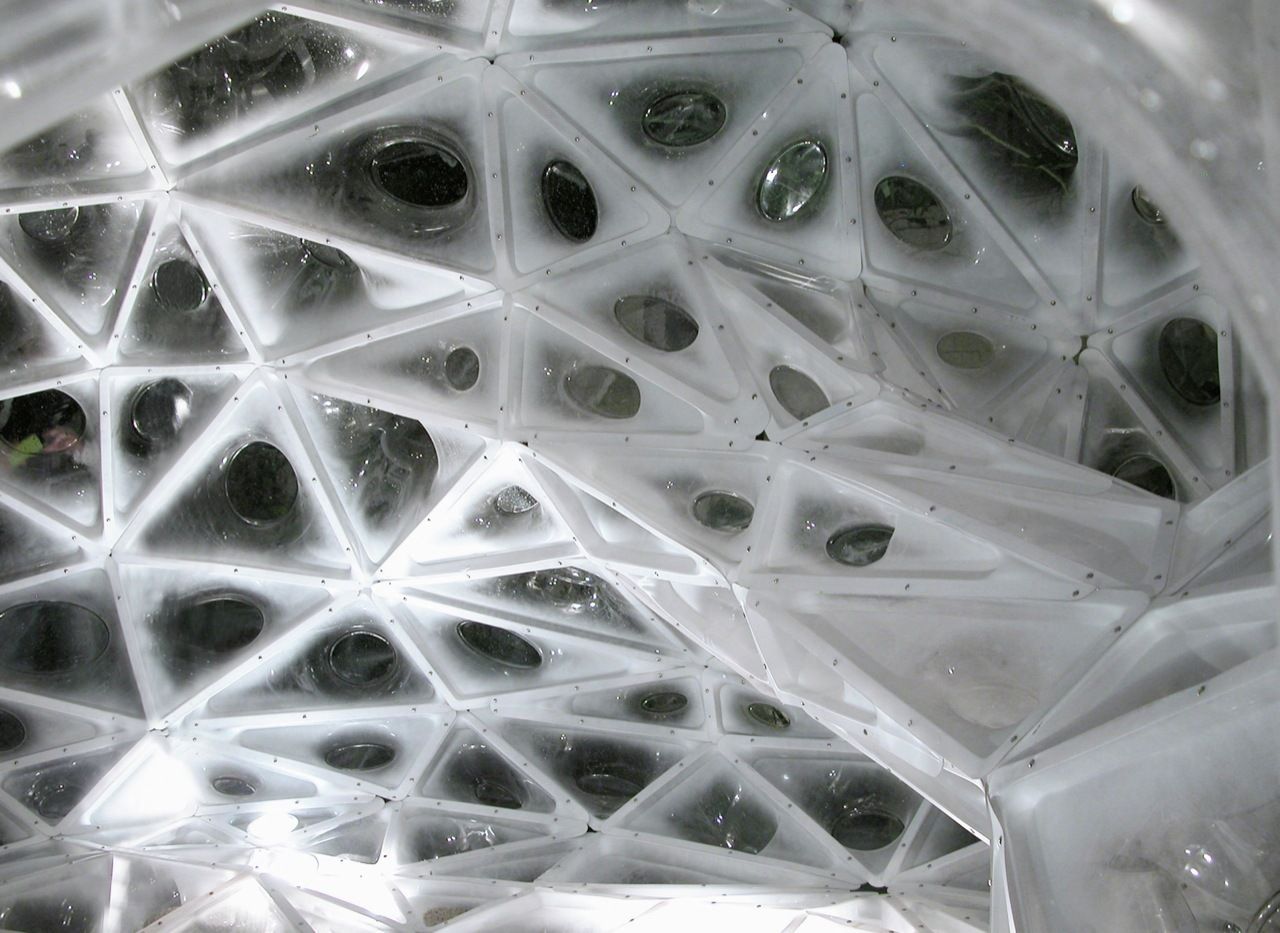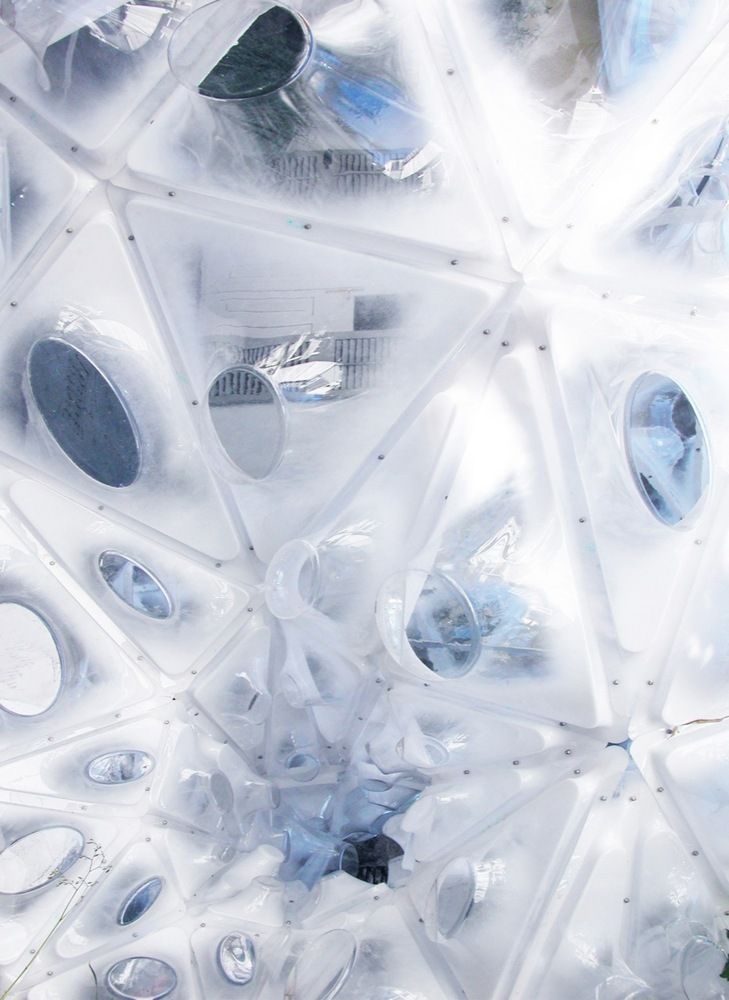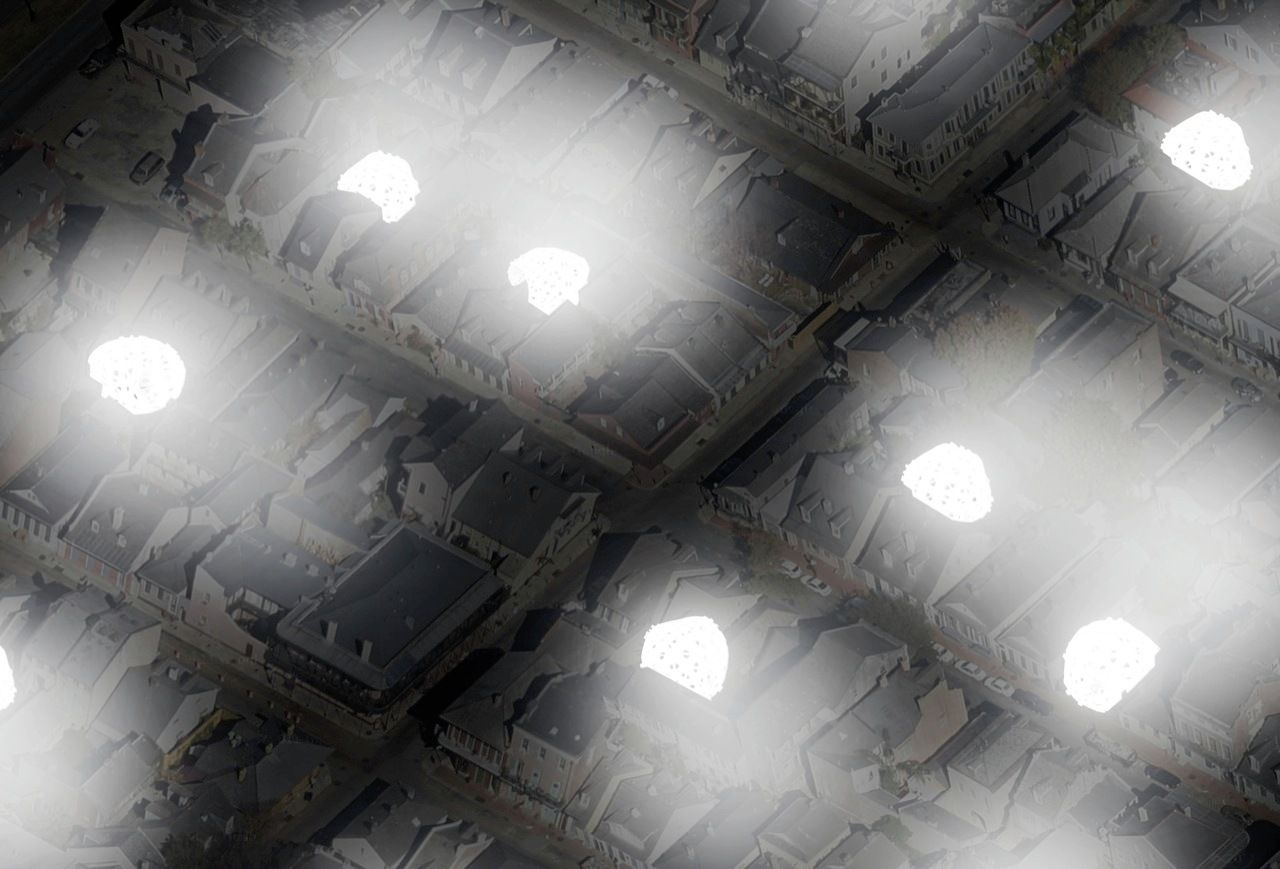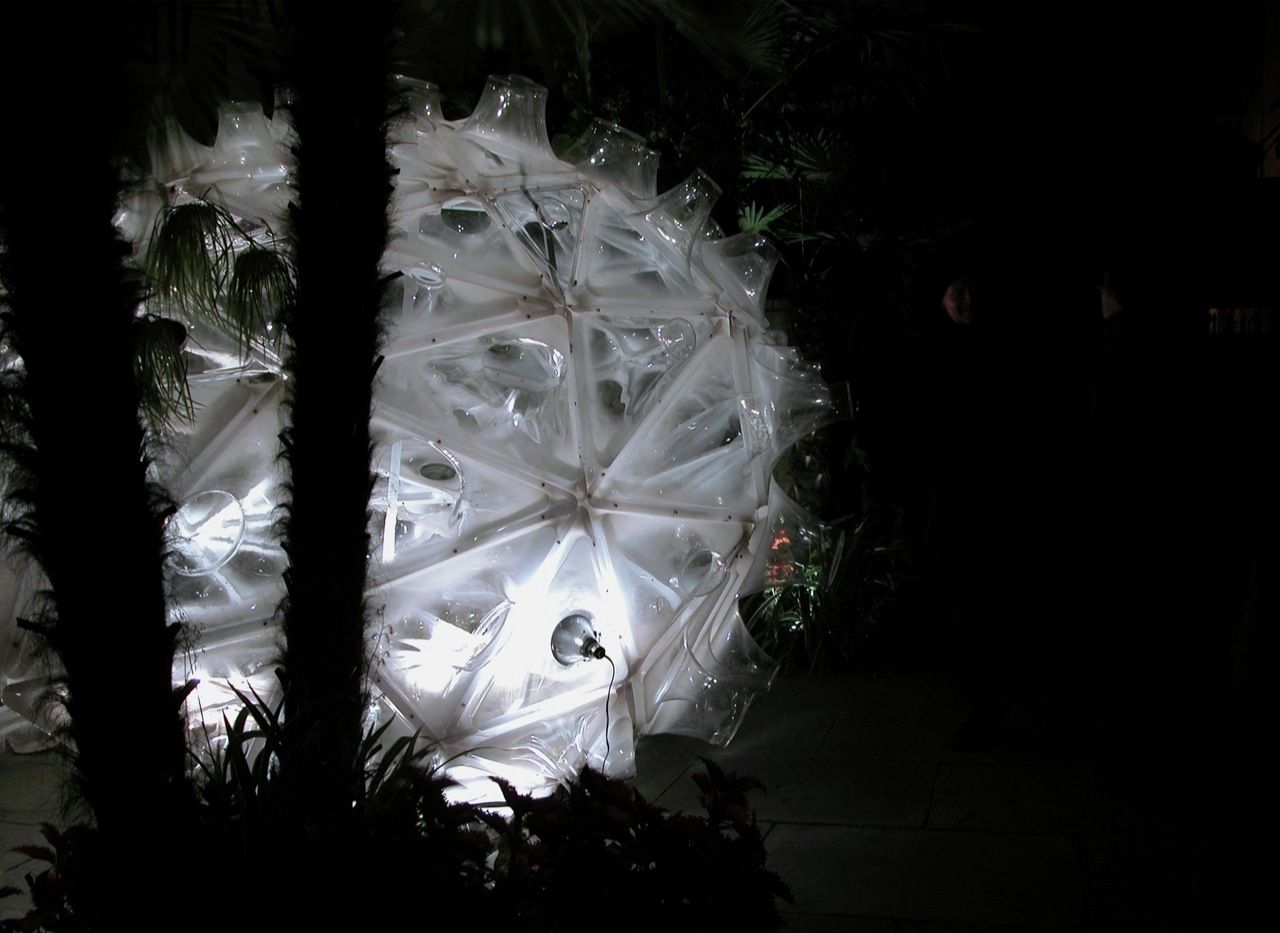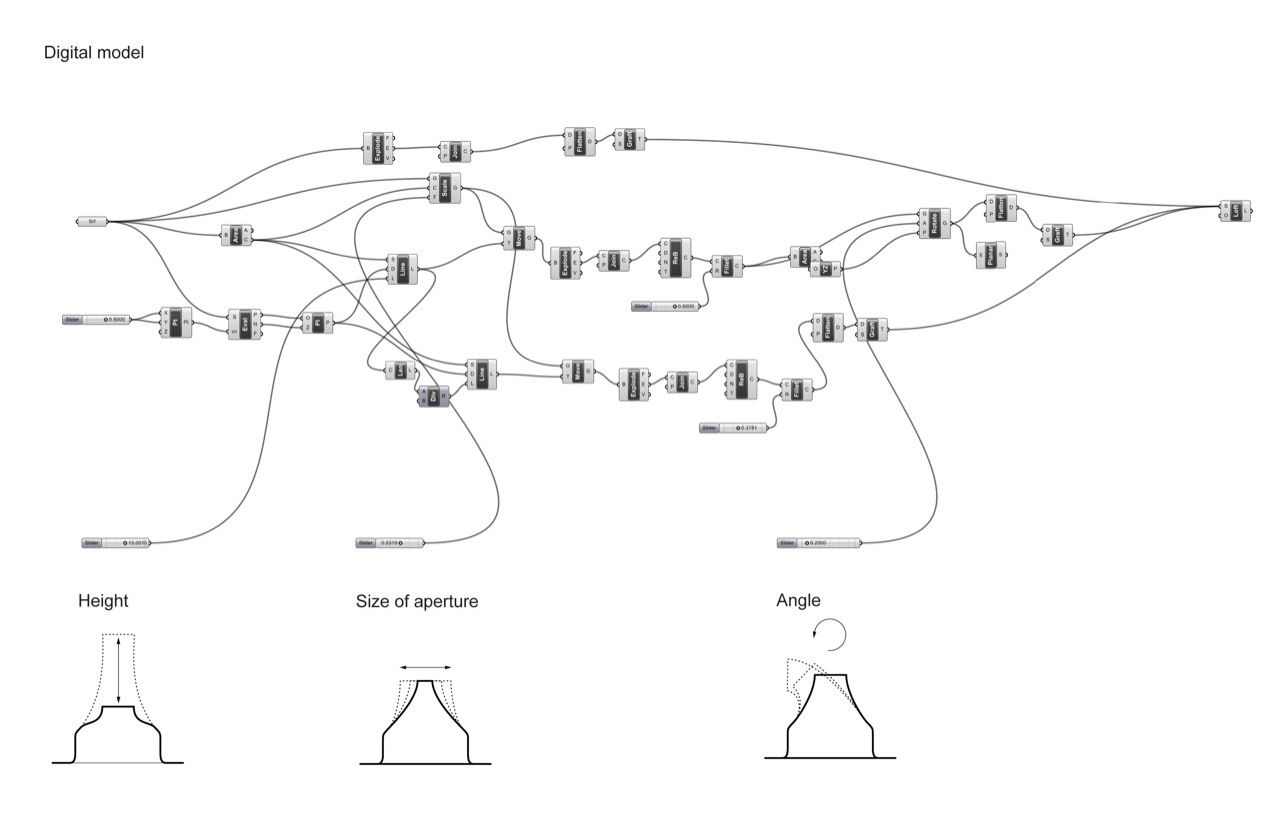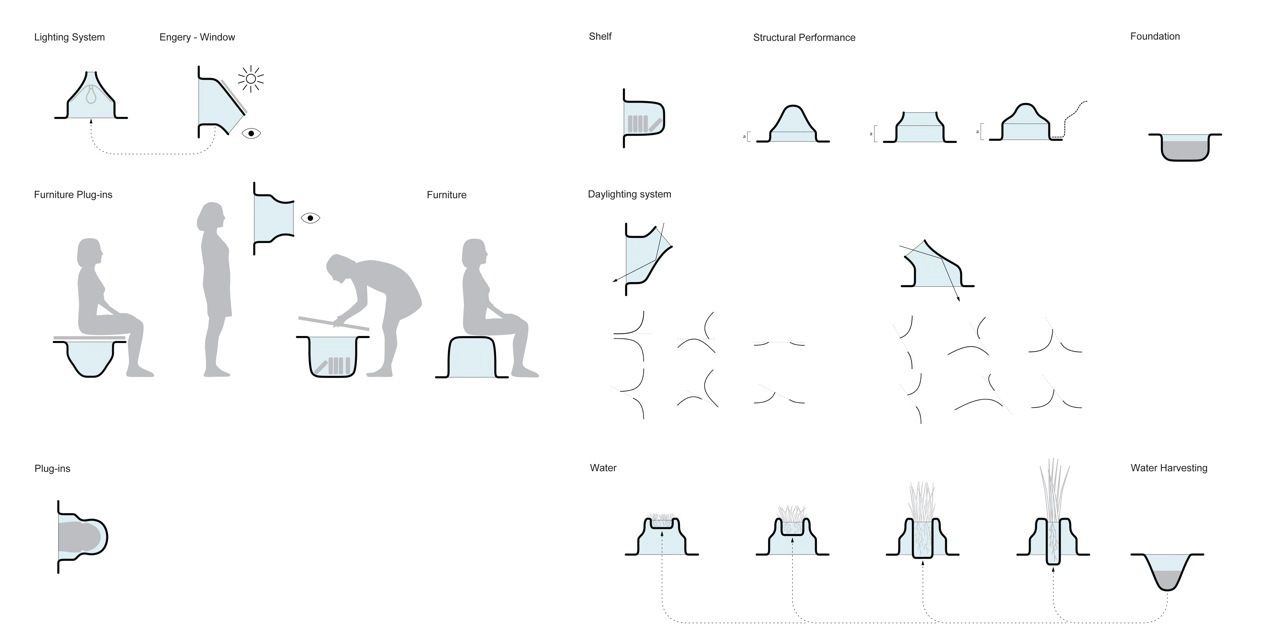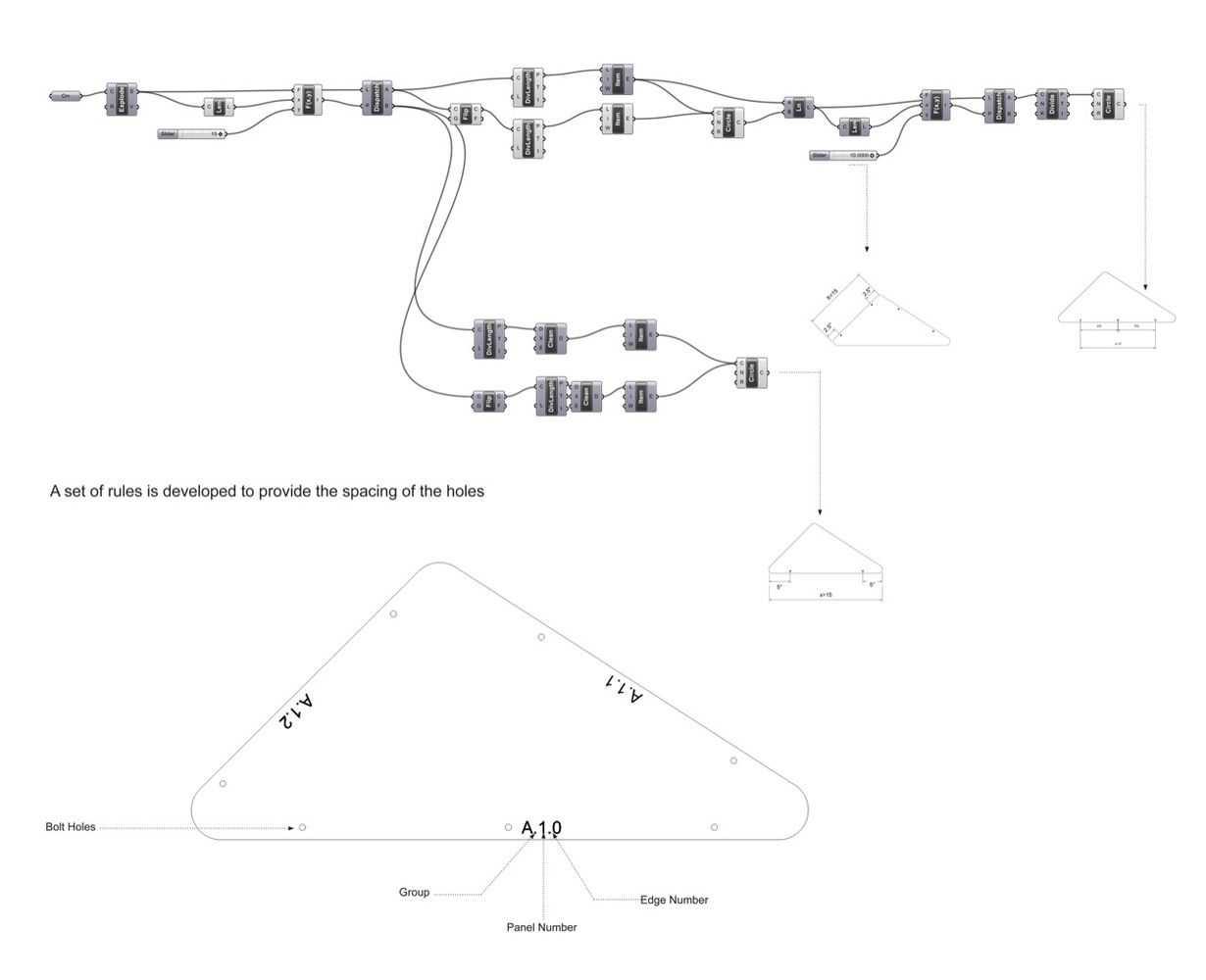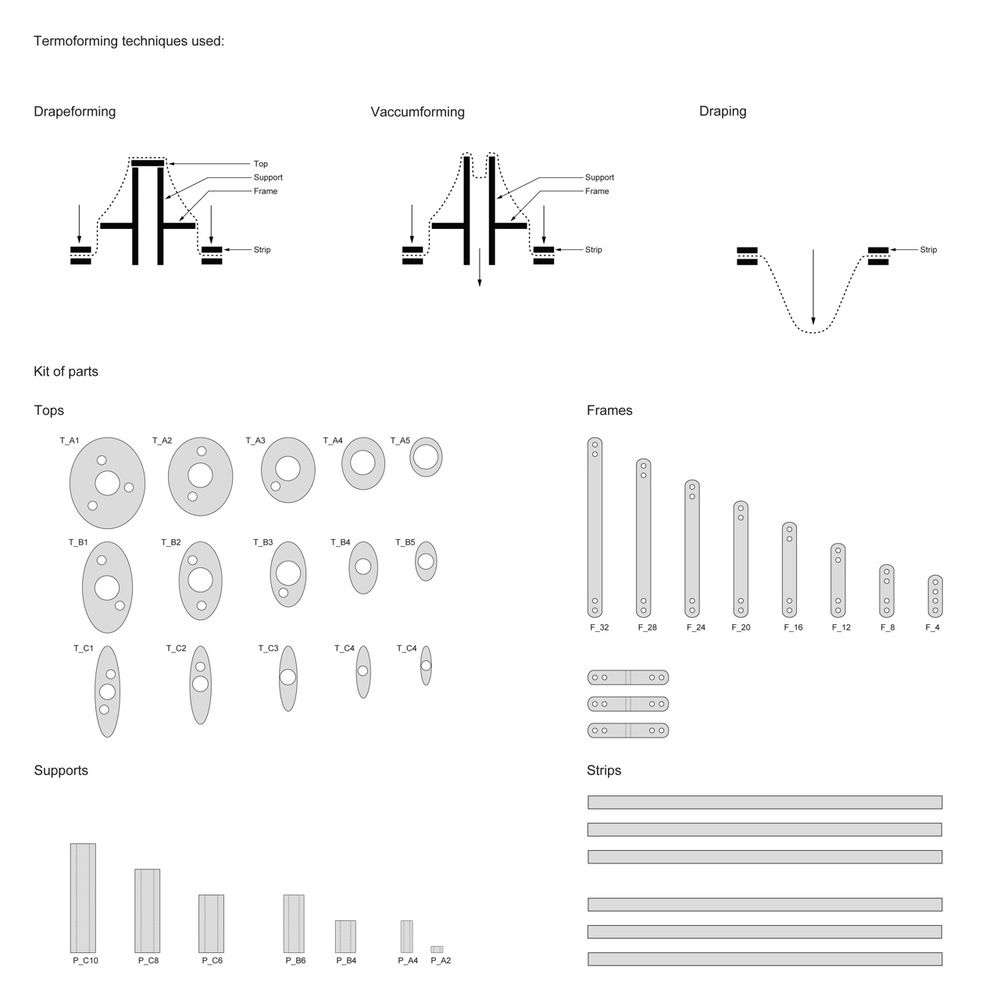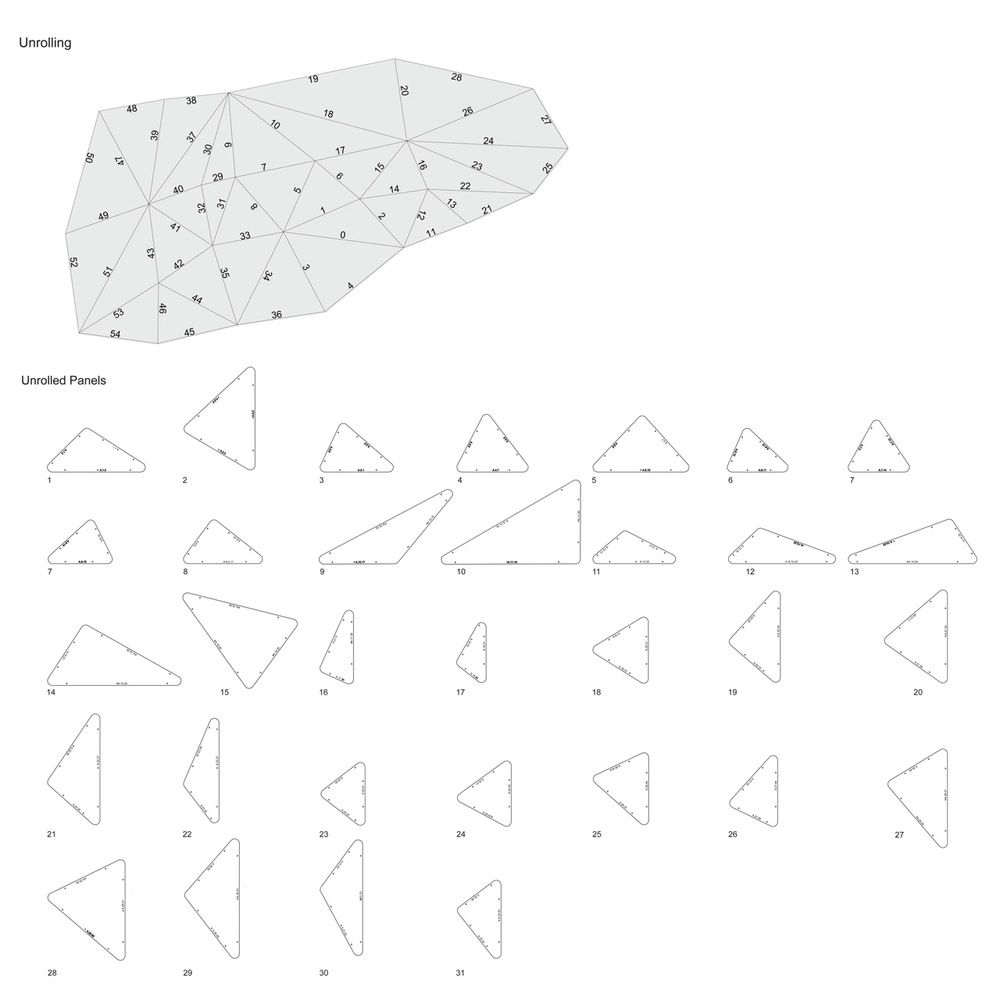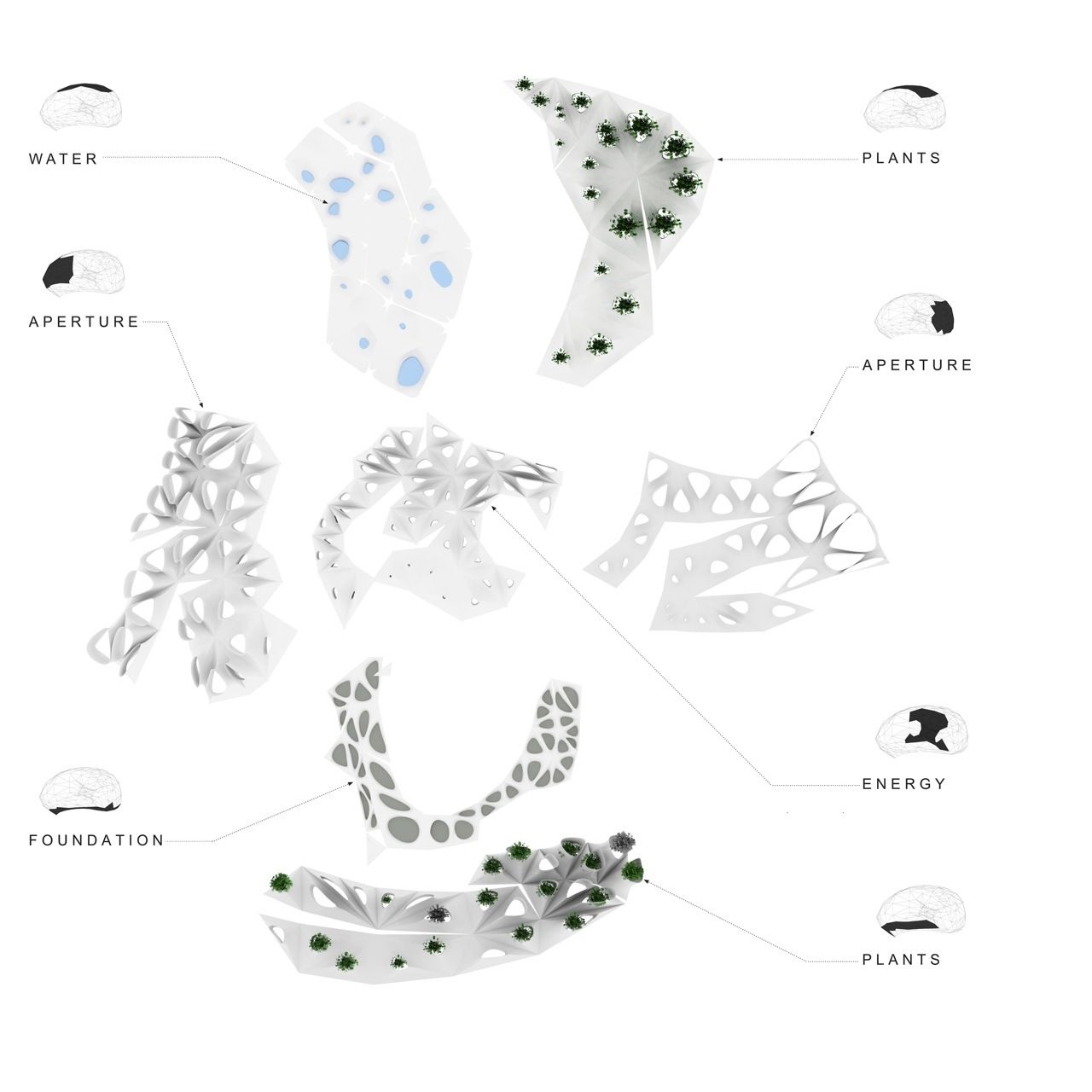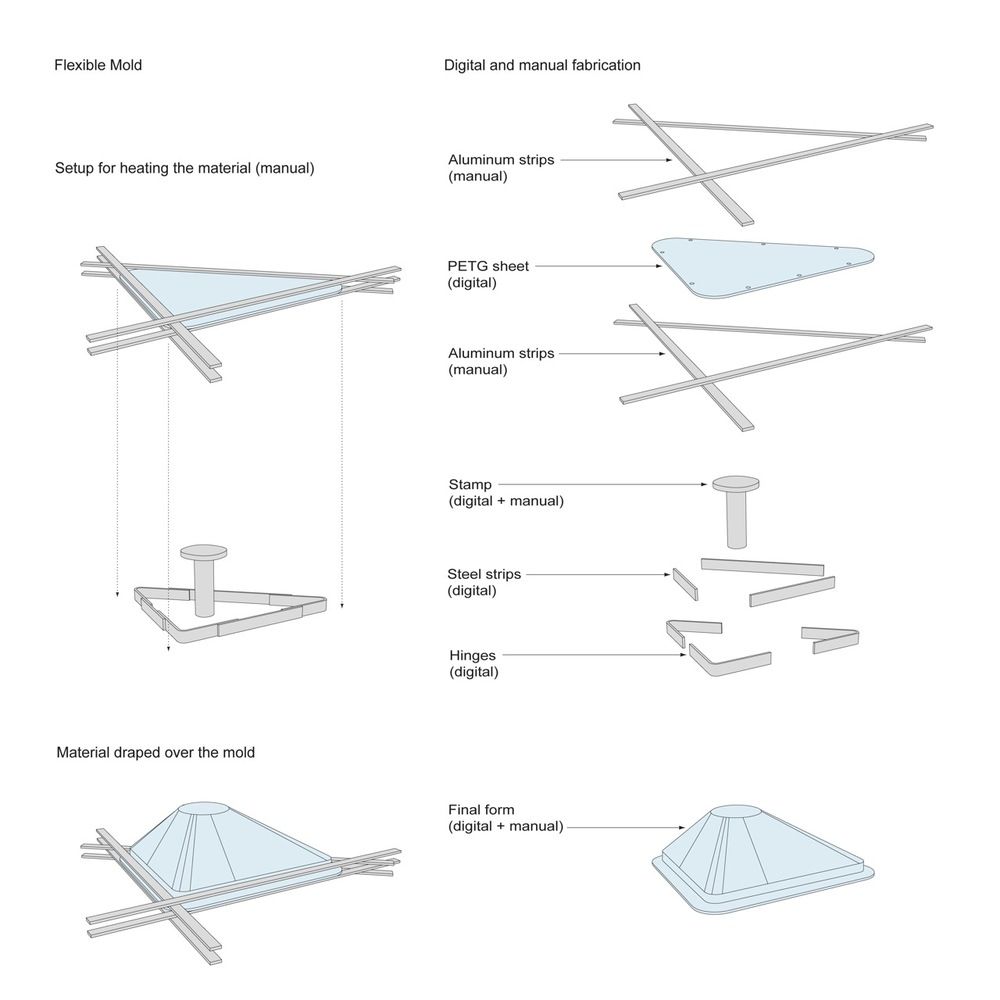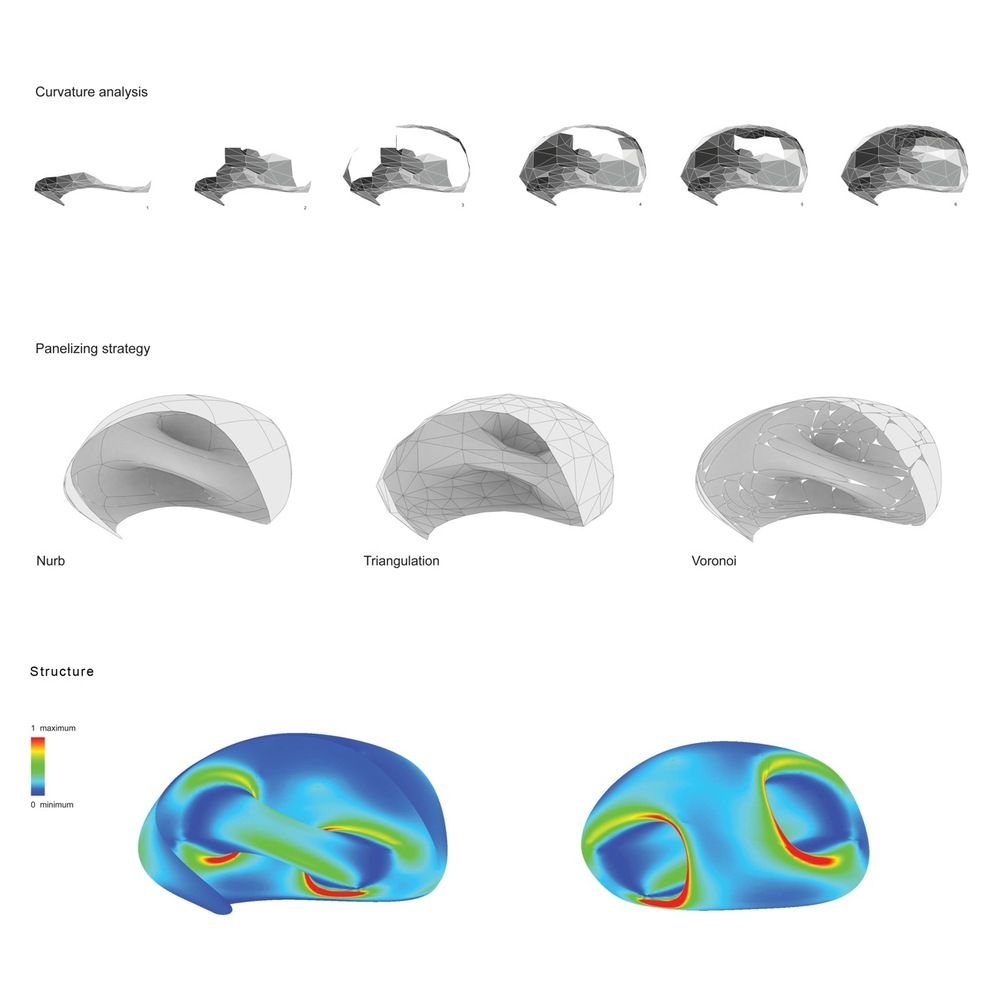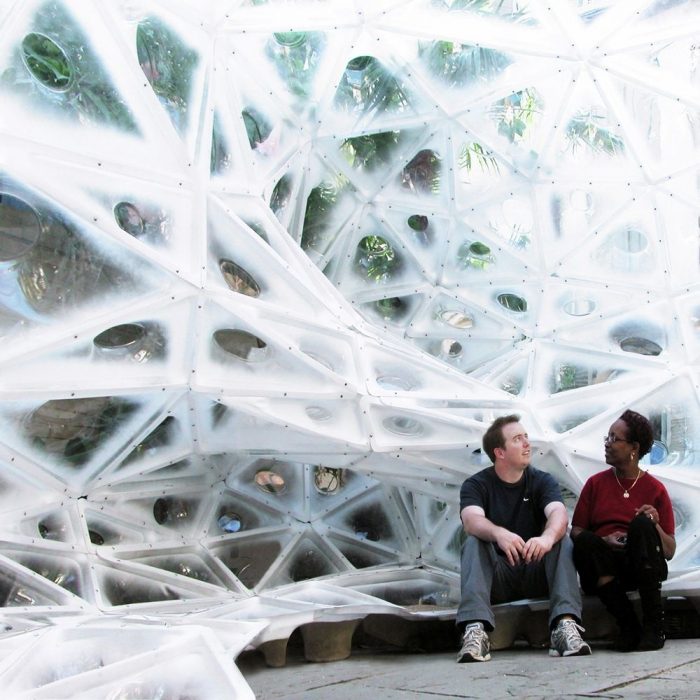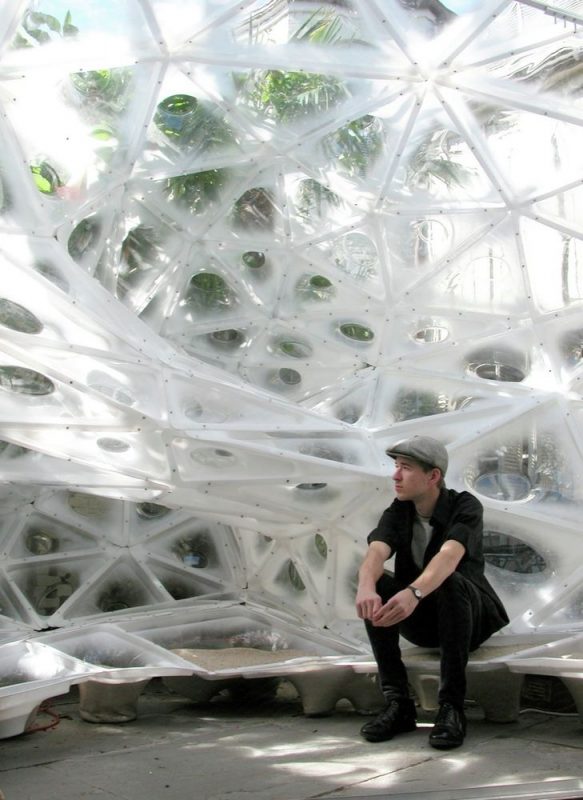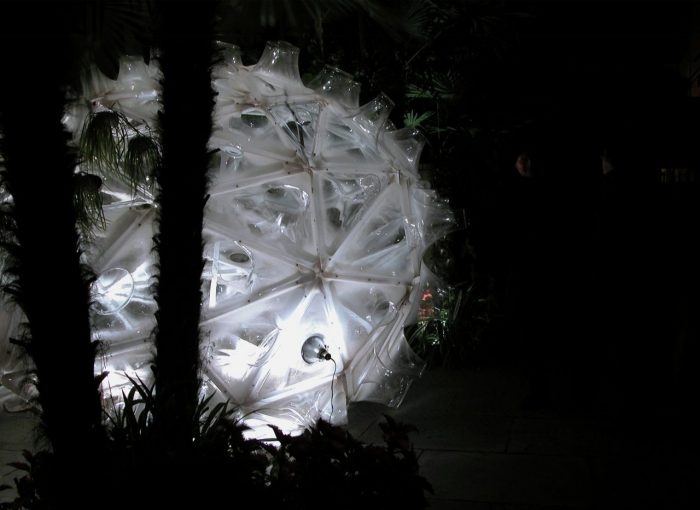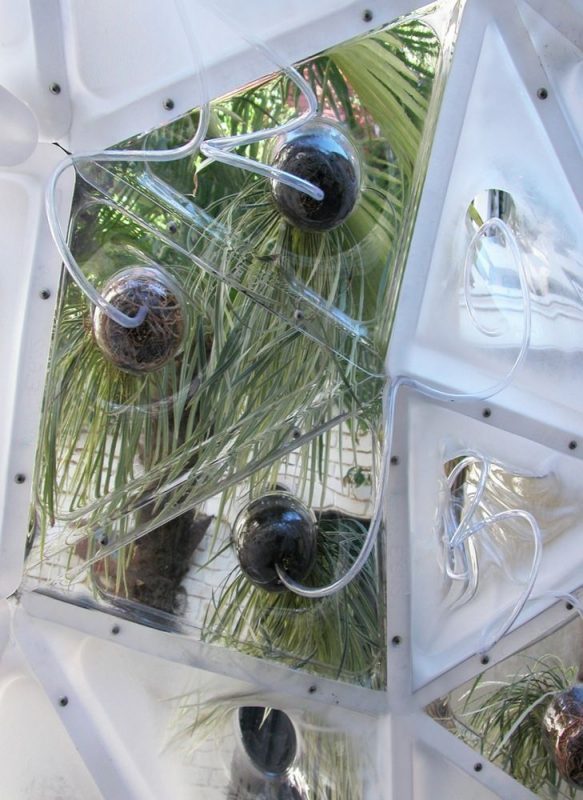Located in the courtyard of a local gallery owned by Arthur Ross in New orleans, USA, and designed by Gernot Riether, the 2011 AIA pavilion represents new digital fabrication modular technique and comprises of over 300 different cells. The pavilion’s geometry distorts in response to specific site conditions, solar orientation and programmatic requirements, such as lighting, seating, viewing, planting and water harvesting, with each of the cells shaped by scripted rules. Using CNC technology, each template was cut from PETG sheets, before being thermoformed into shape using a neatly designed adaptable mould. More details from the architect come after the jump.
Every year, the AIA stages a competition for an intervention that best relates to the architectural and cultural environment of its host city. Hosted by New Orleans this year, the institute selected a scheme by Gernot Riether that proposed a series of glowing spherical enclosures sited within the hidden courtyards of the city’s distinctive French Quarter.
The pavilion not only demonstrates the work of the digital design build studio that Riether leads at the Georgia Institute of Technology in Atlanta, but also uses glycol-modified polyethylene terephthalate (PETG). This material can either be produced from recycled plastic, or more pertinent to this location, from sugar cane: a plant that has been an integral part of the culture of Louisiana for over 200 years.
Situated in the courtyard of a local gallery owned by Arthur Ross, close to North Rampart at 1025 Orleans Street, the 18m² pavilion comprises 320 different PETG cells. The modules were prefabricated and assembled into six larger components, designed to stack and fit into a small truck, and to be installed in less than two days by Riether and eight students. The pavilion cost $2,500 (£1,500) to build.
Keen to underline material as well as the formal innovations, Riether makes special mention of the structure’s carbon footprint, quoting manufacturer Dow’s claim that every 0.5kg of plastic produced represents a total gain of almost 1kg of CO² removed from the atmosphere. ‘Since the AIA pavilion used 123kg of material, the production of the pavilion would remove 246kg of CO² from the atmosphere,’ he states. ‘This demonstrates that producing PETG from sugar cane has tremendous environmental benefits that might make plastic the building material of the 21st century.’